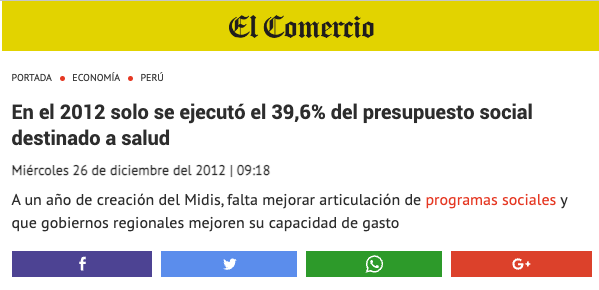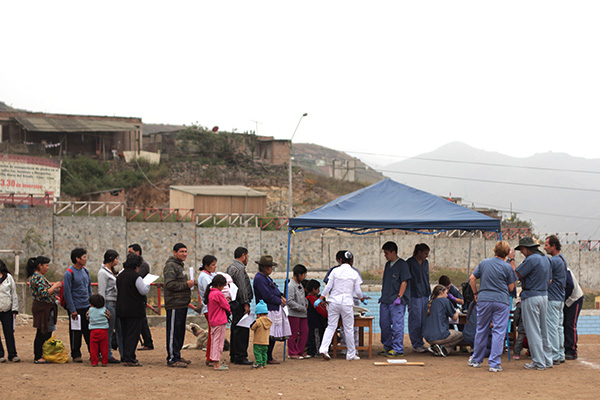In today’s issue of El Comercio, Peru’s main daily newspaper, this headline caught my eye. It reads, “Only 39.6% of the budget allocated to healthcare was used in 2012.” Though it doesn’t have the answers, the article may provide some insight into one of the questions students always ask when they first see the communities where our Mobile Clinics take place.
Peru is home to one of the fastest-growing economies in the world. So why do the nation’s poor — about 1/3 of the total population — still lack access to basic health care services? In recent years, the Peruvian government has implemented widespread reforms targeted at alleviating these problems. But, as we regularly see on our visits to patients’ homes and hospital rooms, the country still has a long way to go.\
According to the experts quoted in the El Comercio article, the budget disparity is due to “administrative bottlenecking,” and the failure of local governments to adequately administer finances allocated toward social programs. The article goes on to describe some of the achievements of the government in social reforms this year, primarily the creation of the Ministry of Development and Social Integration. This ministry administers the Wawa Wasi program, among others, intended to help children and families living in extreme poverty. But the number of actual beneficiaries of these programs represents only a small portion of those who truly need them, according to El Comercio.
In many cases, people don’t receive the benefits they are entitled to simply because they are unaware of the resources available to them, recent changes to government programs, or how to access these resources. According to a report released last week by the Peruvian National Institute of Statistics and Information (INEI), 37.4% of Peruvians do not have health insurance. 34% of Peruvians suffer from chronic illnesses, but only 52.2% of them receive some form of treatment, most of them in pharmacies or Ministry of Health clinics. The Sistema Integral de Salud (SIS) was created to cover health care costs for people living in extreme poverty, like many of those who receive our patient follow-up services. But in order to sign up for SIS, they must go through a long paperwork process, including creating a national identity card, which people in poor and rural areas often don’t have. In centralized Peru and Ecuador, patients may have to travel hours to reach a major city.
A major component of MEDLIFE’s patient follow-up program in Peru is informing patients of their rights and helping them take advantage of the benefits available to them. That means being constantly present, actively seeking out resources, and many times, fighting for them. As we move into a new year, MEDLIFE is renewing its focus on treating root causes with educational programs and bridging the gap in patient care. Because people like Carmen and Esther have the right to see a doctor and get treatment when they’re sick.


